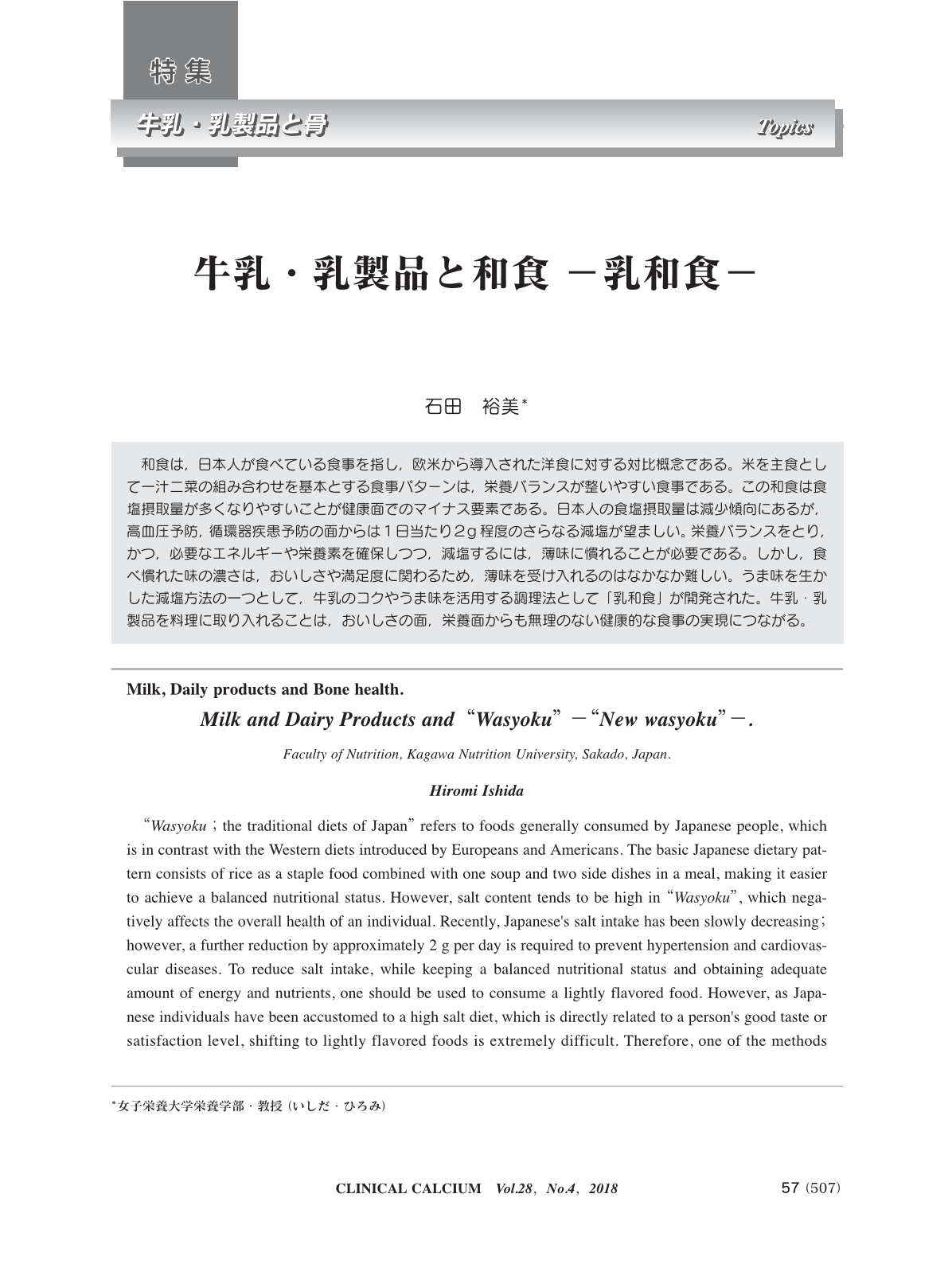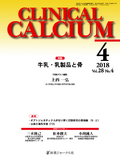Japanese
English
- 有料閲覧
- Abstract 文献概要
- 1ページ目 Look Inside
- 参考文献 Reference
和食は,日本人が食べている食事を指し,欧米から導入された洋食に対する対比概念である。米を主食として一汁二菜の組み合わせを基本とする食事パターンは,栄養バランスが整いやすい食事である。この和食は食塩摂取量が多くなりやすいことが健康面でのマイナス要素である。日本人の食塩摂取量は減少傾向にあるが,高血圧予防,循環器疾患予防の面からは1日当たり2g程度のさらなる減塩が望ましい。栄養バランスをとり,かつ,必要なエネルギーや栄養素を確保しつつ,減塩するには,薄味に慣れることが必要である。しかし,食べ慣れた味の濃さは,おいしさや満足度に関わるため,薄味を受け入れるのはなかなか難しい。うま味を生かした減塩方法の一つとして,牛乳のコクやうま味を活用する調理法として「乳和食」が開発された。牛乳・乳製品を料理に取り入れることは,おいしさの面,栄養面からも無理のない健康的な食事の実現につながる。
“Wasyoku;the traditional diets of Japan” refers to foods generally consumed by Japanese people, which is in contrast with the Western diets introduced by Europeans and Americans. The basic Japanese dietary pattern consists of rice as a staple food combined with one soup and two side dishes in a meal, making it easier to achieve a balanced nutritional status. However, salt content tends to be high in “Wasyoku”, which negatively affects the overall health of an individual. Recently, Japanese's salt intake has been slowly decreasing;however, a further reduction by approximately 2 g per day is required to prevent hypertension and cardiovascular diseases. To reduce salt intake, while keeping a balanced nutritional status and obtaining adequate amount of energy and nutrients, one should be used to consume a lightly flavored food. However, as Japanese individuals have been accustomed to a high salt diet, which is directly related to a person's good taste or satisfaction level, shifting to lightly flavored foods is extremely difficult. Therefore, one of the methods developed to reduce salt intake is a “New Wasyoku;milk-plus traditional diets of Japan,” a recipe utilizing the “koku” or umami taste of milk. The “New Wasyoku” is characterized by adopting to a milk/dairy product-based recipe, which promotes the realization of natural, healthy diets, while maintaining the palatability and nutritional balance of diets.



